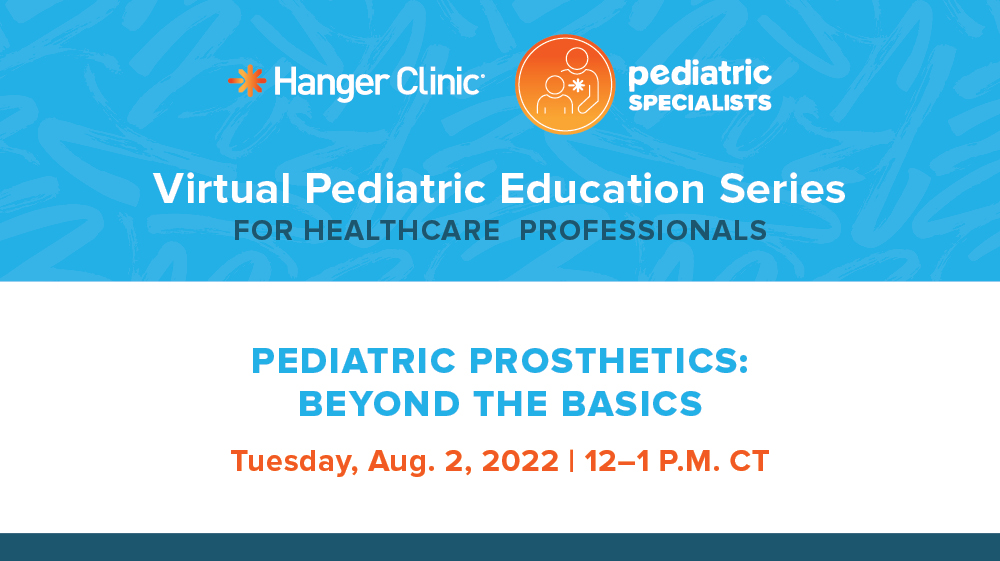Pediatric Prosthetics: Beyond the Basics

Date and Time
Location
Virtual Event
Course Level: Introductory
Target Audience: PT, OT, RN, CM, and others providing care for pediatric patients requiring prosthetic care (CE); MD (non-CE)
CE Contact Hours: 1 hour (60 Minutes)
Overview
In 2005, an estimated 1.6 million people were living with the loss of a limb in the United States.1 Children aged 18 years and younger accounted for 1.6% of the total with an estimated 25,000 children living with limb loss.1
This first course in the pediatric lower limb prosthetic series aims to provide a brief overview of lower limb prosthetics design and key factors when addressing the unique needs of each child with limb loss.
You will learn how to assess rehabilitation goals as children reach developmental milestones, including how to classify activity levels. In addition, you will learn how to accurately document care needs that support the unique prosthetic rehabilitation plan, and identify age-appropriate milestones to provide patients with successful outcomes.
Objectives
Upon completion of this program, participants should be able to:
- Assess rehabilitation goals as children reach developmental milestones
- Identify etiology/causes of pediatric amputation
- List basic prosthetic terminology and componentry to better communicate with others on the child’s care team
- Analyze documentation needs to meet the goals of the patient
- List optimal ways to collaborate with others on the care team and provide follow-up and reassessment as needed
Moderator

Shannon O’Shea, CPO
Area Clinic Manager and National Clinical Specialist, Pediatrics
Shannon is a Kansas City-based Clinician, Area Clinic Manager and National Clinical Specialist, Pediatrics. She provides orthotic care to children with a wide variety of diagnoses.
Presenters

Jillian Okimoto, CPO
ABC-Certified Prosthetist/Orthotist
Jillian is an ABC-certified prosthetist/orthotist for Hanger Clinic in Phoenix, Arizona. With more than 12 years of experience, Jillian specializes in custom-fitting lower extremity prosthetics for pediatric patients, microprocessor feet, microprocessor knees, and sport-specific/running prosthetics.

Jason Macedonia, L/CPO
AREA CLINIC MANAGER
Jason is an ABC-certified prosthetist/orthotist and area clinic manager for Hanger Clinic in Columbus, Ohio. As an area clinic manager with more than 18 years of experience in the field, Jason specializes in pediatric and adult upper and lower limb prosthetic technology with an emphasis on upper limb prostheses.
1. Ziegler-Graham K, MacKenzie EJ, Ephraim PL, Travison TG, Brookmeyer R. Estimating the prevalence of limb loss in the United States: 2005 to 2050. Arch Phys Med Rehabil. 2008;89(3):422-9.
